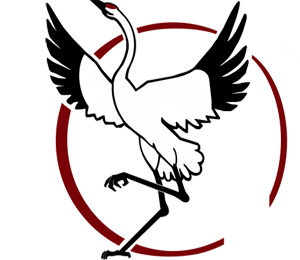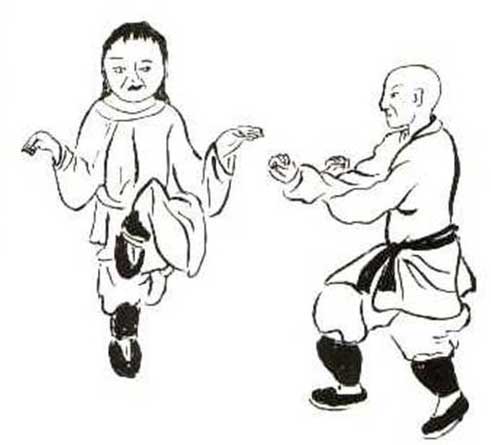 Two Cranes and a Chinese Lass
Two Cranes and a Chinese Lass
We all know that Karate originated in Okinawa but are not very sure how this combat art took birth there. Every art or tradition takes shape through generations re-tuned by many cultural transitions. One prominent theory of Karate is that it has evolved from Chinese martial arts, especially from White Crane Gonfu combined with the Monk fist fighting system.
The story goes like this: During the Qing Dynasty period in Yongchun, Fujian province of China, a great Monk Fist Boxing (one version of Gongfu) master named Zaongong was killed by a mob by deception. His young daughter and disciple, Fang Qiniang (also referred to as Fan Qiang Liang) was revengeful but helpless since she had not mastered the art,her father had passed on to her. Above all, she was young, frail, and alone, not able to fight with the fierce men of the mob.

While living with a burning vengeance in her heart and always pondering a counter, she happened to see a battle between two white cranes. She was amazed at the skilful defence with wings, swift but concealed pecking and the instinctive evasion of the cranes, which were in an intense battle. She took a long staff, tried to poke the cranes in order to end the fight. But she could not touch the cranes, however hard she tried. This incident gave her an insight into the fighting tactics of the two birds. It is not hard, strong muscle power that generates real martial power, but the speed, softness, and suppleness that can be used against any opponent, regardless of body size or power.She realised that it is the combination of soft and hard techniques with accurate timing that is the key to real martial power. This revelation inspired her to fuse Monk Fist boxing into a new fighting strategy that she developed and practised for three years.
Very soon, she became popular with the new style of battle tactics, and many martial artists approached her to test her skills, but were defeated. A well-known hard-style boxing expert, Zeng Cishu, with "fingers like iron and a body like a rock," also confronted her to test her fighting ability. But he realised in dismay that his iron fingers and rocky body had no use in the battle with the soft, supple lady opponent. Following the futile fight, he became a disciple of Fang Qiniang and diligently studied her soft style of combat art.He stayed as a disciple with her for a long time, and thus a new tradition of hard and soft styles of martial arts evolved.

When martial arts evolved in Okinawa, it was an independent kingdom called Ryu Kyu. From the 14th century, many Chinese martial artists resident in Okinawa passed their native martial system into the Okinawan primitive combat system called Te. The great Chinese martial artist Kusanku (Wang Ji) came to Okinawa in 1683 as a Chinese envoy and passed the Crane style form known as "Flying Swallow" to the Okinawans. At that time, many other Okinawan natives, like Chatan Yara (or Yara Guwa), went to China, spent many years there studying Chinese martial arts, and most probably studied the White Crane system. He returned to Okinawa in 1700 and taught the system to his countrymen.
Okinawan martial arts were initially called Dou-Te or Chinese Hand. The Kangi ideogram Tou stands for Chinese and Te for hand. After a few centuries, the same Kanji ideogram was interpreted as Kara-te, where Kara represents "empty" and te remained as the same – ‘hand’. Finally, in the year 1935, a group of senior martial artists in Okinawa assembled and declared that the Okinawan combat system would be called Karate, the ‘empty hand’ or weapon-less combat system. Another reference to karate's Chinese connection is "Shorin-ryu," which translates as "Shaolin," China's great martial icon.
Taking all of this information into account, we can conclude that modern karate has an undeniable connection to and influence from many Chinese martial arts systems, particularly the White Crane and Monk Fist Boxing systems.